In his 1961 short film Danish Design, Jørgen Roos tells how in the late 18th century the Danish artist Nicolai Abildgaard travelled to Greece and Italy in search of inspiration from classical art, and came back not only with artistic impetuses, but with classical furniture concepts he began to reproduce: "Abildgaard had become Denmark's first furniture designer".1
And while we'd argue about the validity of that claim, there is an undeniability in an understanding of not just furniture design, but design, as both a profession and a cultural expression, in Denmark and further afield, as having its origins in artistic practice.
And since then?
With the exhibition The Magic of Form - Design and Art, Kunsten Museum of Modern Art Aalborg seek formal parallels and inter-twinnings in the (hi)stories of art and design.......
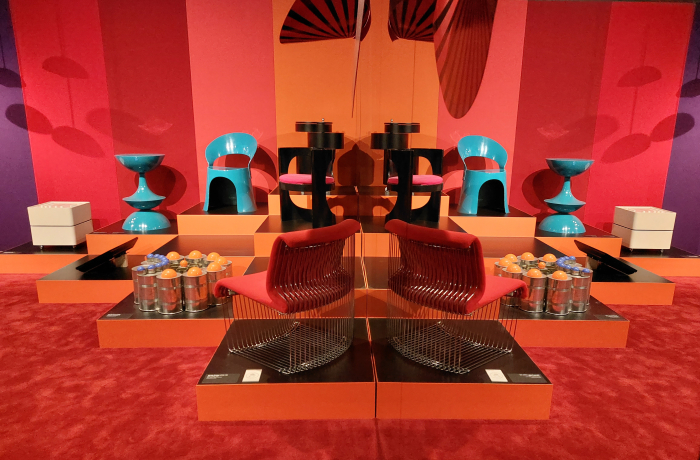
Nicolai Abildgaard wasn't alone in either visiting the lands of Antiquity nor in returning from them with inspiration in the course of the 18th century, there was almost an industry in such; and the classical revival such explorations unleashed not only ushered in the European Neoclassicism of the late 18th/early 19th century, which as an architectural expression still dominates in most major European cities, but also saw all manner of copies of the furniture of ancient Greece and Rome increasingly appear in the homes of polite society across Europe. For all copies of the Klismos, that most idiosyncratic of ancient Greek chairs, and, and thanks to the Neoclassicists passionate copying, best known of ancient Greek chairs.
A copying which underscores that in centuries past furniture developed and evolved through... copying, and that (largely) matter-of-factly; there was in days of yore a lot less importance, value, preciousness, around forms and technical solutions, ownership of furniture concepts wasn't really a thing. And so one copied.
Yet for all the creativity of centuries past in terms of formal and technical solutions, and for all the very satisfying and pleasing developments from centuries past that define and chart our relationships with furniture, furniture design, we'll argue, and simplifying more than is perhaps prudent, is very much something that arose at the end of the 19th century and established itself in the early 20th century.2 And that at the same time as evolving social, cultural, technical, economic et al realities saw all expressions of applied art begin to move ever further away from fine art and towards, and give rise to, design.
A process and period which in a Danish context is closely related to the likes of the Johan Rohde, the Harald Slott-Møller, the P.V. Jensen-Klint, the J.F. Willumsen and the Thorvald Bindesbøll, with whom The Magic of Form opens.
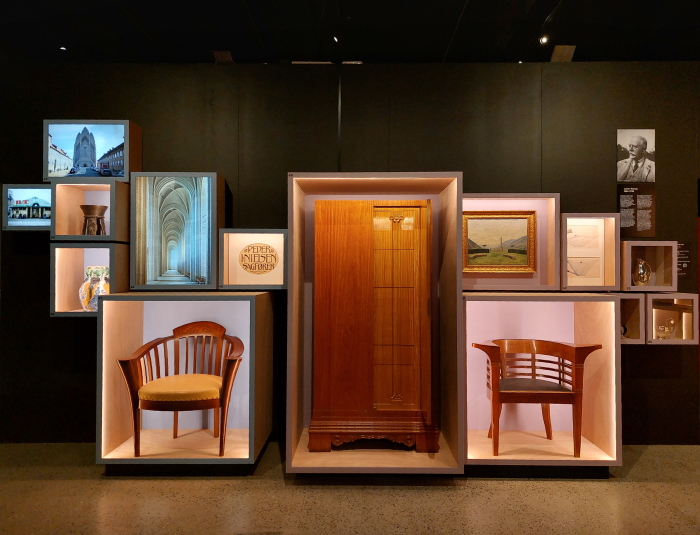
Yes, all men, we'll get to that..... an opening chapter which helps underscore the artistic heritage from which design in Denmark arose, underscoring it not only through the quintet's biographies and examples of their art art, but also in the lack of complex functionalities in the examples of their objects; as objects the presented works' primary functions are to be found in decoration, or lack of, in ornamentation, or lack of, in representation, or lack of: not so much form follows function as form is function.
An understanding of the form/function relationship that would, as we all now know, evolve.
However, as the first part of the exhibition title neatly implies, The Magic of Form - Design and Art isn't primarily concerned with evolving definitions of form/function relationships; for all that many of the objects encountered throughout the course of The Magic of Form may have at times joyous technical functionalities, and/or may allow for interaction on physical, intellectual and/or emotional planes, as an exhibition the singular focus of The Magic of Form is form, is an exploration of formal developments, an exploration of formal expressions, an exploration of formal understandings and of understandings of form.
And that, as the second part of the title neatly implies, in Design and Art, design and art in dialogue with and in context of one another.
To that end, from its opening chapter in the late 19th/early 20th centuries The Magic of Form moves on over the Formalism that arose in the inter-War years, and which is discussed with particular foci on, for example, the utilisation of Pure Geometric Forms, the utilisation of Acute Angles and also of the Construction being as much the object as the means to the object, before moving the discussion on to Organic Forms, for all encapsulations of and inspiration from nature and ending, or at least ending the first part of its narrative, with the formal fantasies of Pop Art, and which in terms of design is essentially a very small scale Verner Panton exhibition. With brief contributions by Nanna Ditzel and Ole Gjerløv-Knudsen/Torben Lind by way of contrast and comparison.
And also brief contributions by Roy Lichtenstein, Claes Oldenburg and Ole Panton, younger brother of Verner, by way of contrast and comparison.
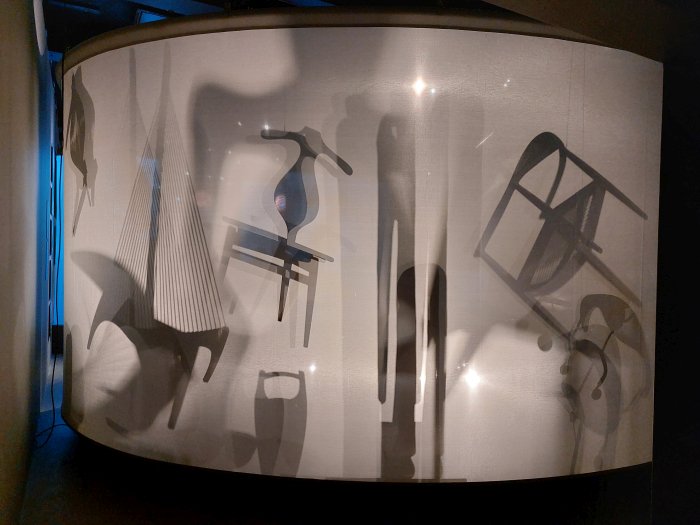
In addition to mixing art and design throughout its presentation The Magic of Form also mixes works from different decades, epochs, works, if one so will, from different genres, thus, for example, in context of Sculptural Design one can enjoy a direct comparison of Finn Juhl's 1949 Chieftain Chair with Gerrit T. Rietveld's 1918 Red Blue Chair, two works which for all their apparent dissimilarity can, as The Magic of Form helps elucidate, be considered one and the same, just from different periods in (hi)story, raised in different social and cultural contexts, raised against the background of different understandings of design; or in context of Pure Forms Torben Skov's 1983 Vio chair stands directly juxtaposed with Poul Henningsen's 1932 Snake Chair and thus helps elucidate that for all Postmodernism was post Modernism it was also about a recapturing of a part of Modernism in a world, a society, that was no longer that in which Modernism had arisen, a world post that which it was; or, and more generally, the rise of organic forms in the post-War years as a return to the nature that was so central, driving, in the development of the formal expressions of Art Nouveau in the late 19th/early 20th century.
And in doing so The Magic of Form helps deconstruct understandings of formal expression as being, if one so will, linear; helping underscore as it does that while new positions to and understandings of form arise, the progression isn't successive but aggregative, cumulative: that which was doesn't vanish because something new comes along, but does, ¿must? reinvent itself in the continually evolving context in which if finds itself.
Which yes, does sound like a metaphor.
And which in doing so, and in being such, helps elucidate not only the inherent and inextricable links between developments in society and developments in art and design, but also that more often than not the challenge isn't developing something new, but keeping that which we have relevant and meaningful.
Or as P.V. Jensen-Klint admonished in 1901, "let us cultivate the object, the surface, the materials in accordance with its essence and the requirements of the times; let us never indulge in copying old styles, but through a thorough education and a study of old ages’ unfailing taste and dignified approach to style, cultivate our personal style, with the idea of creating cozy, beautiful, and grandiose surroundings for the life and activities of contemporary man".3
A Nicolai Abildgaard copied. A P.V. Jensen-Klint cultivated. And from that cultivation, design grew from artistic and craft practice.
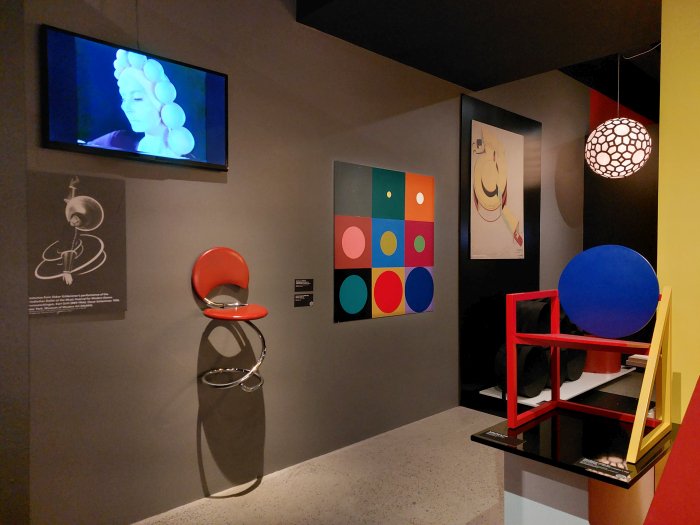
A co-production between Louisiana Museum of Modern Art, Designmuseum Danmark and Kunsten Aalborg, The Magic of Form neatly supplements, albeit briefly in photographic form, its main narrative with examples of formal expression in architecture, including, for example, Zaha Hadid's Vitra Fire Station as an example of Acute Angles, Farnsworth House by Ludwig Mies van der Rohe in Composition, or Jørn Utzon's Sydney Opera House as a Shell, and which in doing so helps set the narrative in a wider context, further underscores the creative interplay in terms of formal expressions, an interplay between fine art, applied art, architecture and craft that in Europe can be effortlessly followed back to the Neoclassicism of the late 18th/early 19th century. While the focus on Danish designers - if we judged correctly Gerrit T. Rietveld is the only non-Danish designer featured - juxtaposed with a very international, if very Danish heavy, artistic roster, helps keep what is a universal discussion, universal developments and positions, very much in a Danish context.
And thus enabling The Magic of Form to allow not only for considerations on form in architecture, art and design, but also for differentiated perspectives on understandings of design in and from Denmark.
Here, sadly, isn't the time nor place for a fulsome discussion on popular understandings of design in and from Denmark; save to note that Jørgen Roos's aforementioned 1961 film Danish Design, which runs on constant loop in The Magic of Form, was produced in context of the exhibition The Arts of Denmark: Viking to Modern which toured the USA in the early 1960s; an exhibition sponsored by the Danish Government, and a film which ends with the the claim that "the reputation today enjoyed by Danish design is based on time-honoured tradition and quality craftsmanship".4
Sound familiar?
And the film itself is a 16 minute exercise in reinforcing the validity of that claim. One of a great, great, many similar exercises in the 1950s and 1960s on the part of the Danish authorities to define "Danish Design" in the hope of improving global sales of objects of daily use produced in Denmark; commercially motivated definitions of design in and from Denmark which are still the foundations of the contemporary marketing of anything with but the vaguest association with Denmark, and post-War marketing exercises which through their perennial regurgitation over the decades have become established as an irrefutable universal truth. And a straightjacket from which design in and from Denmark must struggle to escape. No, we don't consider it to be a happy state of affairs.5
As an exhibition The Magic of Form challenges you to challenge the one dimensionality of that popular understanding of design in and from Denmark, challenges you to challenge your understanding of design in and from Denmark, offers differentiated perspectives which open more probable vistas on design in and from Denmark beyond the marketeers clichéd storybook.
And as an exhibition The Magic of Form also allows for differentiated perspectives on the the gender balance in the (hi)story of design in and from Denmark.
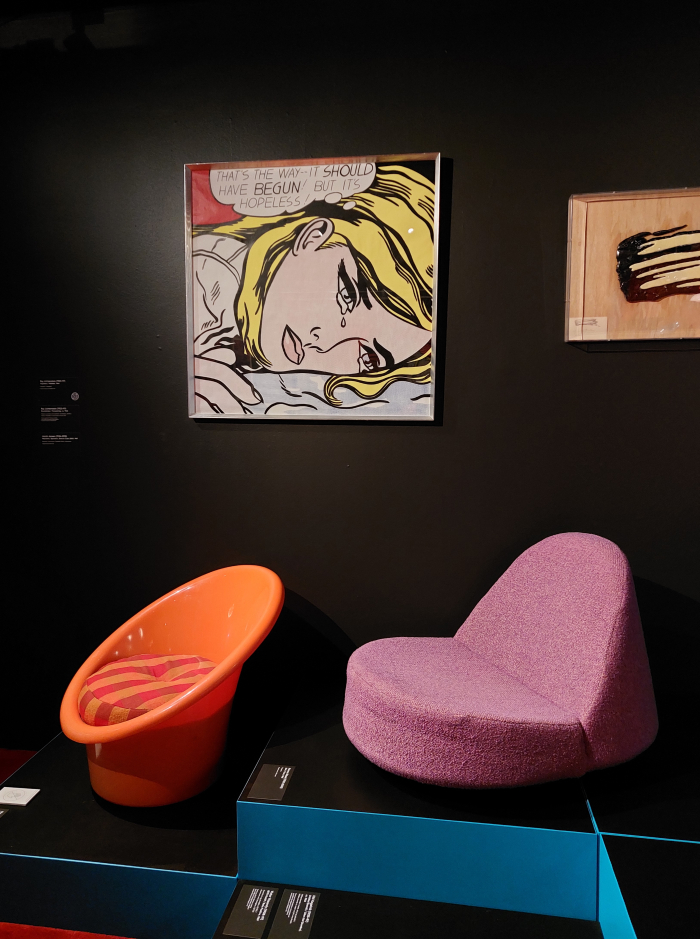
Indirectly.
While we, admittedly, didn't count all the designers represented in The Magic of Form, from those 12 profiled in the first part of the exhibition's narrative, but 1 is female: the ceramicist Bodil Manz. And our gut impression is that the overall presentation wasn't much, any, better. The Magic of Form is very much a (his)story of design in Denmark.
Which we would question.
We'd question the maleness of the opening section; as, for example, the Grassi Museum Leipzig's exhibition Made in Denmark. Design since 1900 demonstrated, there were a great many females active in Denmark at the turn of the centuries, as there were across Europe, Art Nouveau wasn't as male as it's often understood to be, and while questions of individual relevance to and position in the progression of understandings and approaches must always be posed, so in Kunsten must questions of the validity, the probability, of the maleness of The Magic of Form's opening chapter.
We'd also question the lack of female furniture designers before Nanna Ditzel in the 1960s.
Seriously!!! For real!!!
To paraphrase Jørgen Roos, viewing The Magic of Form one could believe that, Ditzel had become Denmark's first female furniture designer.
Seriously!!! For real!!!
The positioning of Roy Lichtenstein's 1964 work Hopeless above a 1965 low-down lounger by Nanna Ditzel may or may not be chance. Is very poetic. And most satisfying.
And also underscores that in its unquestioning maleness, its unquestioning (his)story of the (hi)story of design in Denmark, The Magic of Form is, should be, must be, an admonishment that the popular understanding of design in Denmark needs to be freed from more than its perceived craft simplicity.
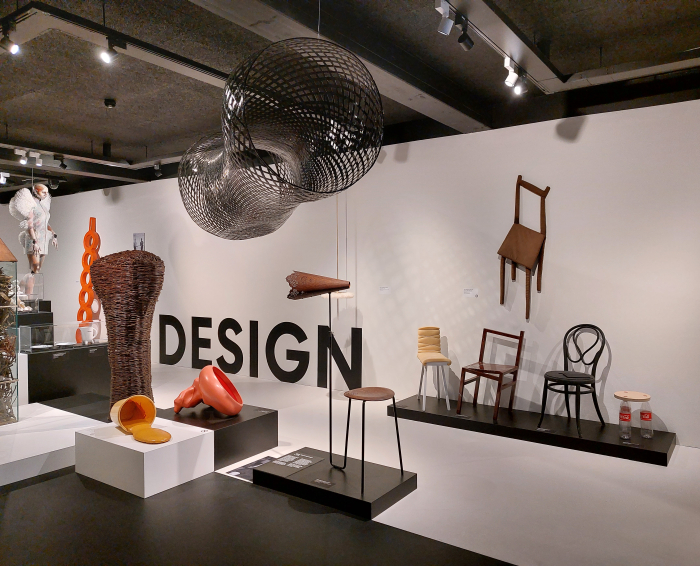
Having brought reflections on form in art and design up to Pop Art, a closing point for its main narrative which poses a lot of questions about new formal expressions in art and design since the 1960s - have we really developed no new formal expressions and understandings? And if not, why not? - the final chapter of The Magic of Form moves away from its prime focus and reflects more widely on contemporary interchanges between art and design, if one so will explores how the relationships between art and design in the early 20th century are understood, reflected and expressed in the early 21st century.
A presentation which features works by the likes of, and amongst many others, Cécile B. Evans, Mathias Bengtsson, Ditte Hammerstrøm or Astrid Krogh, so yes, a lot more females than one has met before; and a presentation which also features Karl Marx, or more accurately features a quote from Karl Marx:
"Art is not a mirror that you hold up to reality, but a hammer with which you shape it"6
A statement whose validity we'd question just as staunchly, vehemently, as we question Jørgen Roos's claim that Nicolai Abildgaard was Denmark's first furniture designer; and a (monstrously incorrect) statement that brings you to the question that has been following you round The Magic of Form like the unobserved proverbial elephant: that of the border between art and design.
A question that until this point you failed to notice because of The Magic of Form's singular focus on form, and a question which The Magic of Form's singular focus on form very neatly helps you approach. Once Karl Marx has pointed out the elephant traipsing behind you.
For through its singular focus on form, through reducing the displayed objects to their form and thereby denying them their other functionalities, The Magic of Form allows space for you to reflect on what the various works are beyond their form, and in doing so not only helps one approach answers to the question of the differences between art and design, but also to approach an appreciation that as society has become increasingly complex since the days of Johan Rohde et al, so to have the functional demands on and requirements of both art and design become increasingly complex, being as both are responses to contemporary realities; and through this, when not directly parallel then certainly simultaneous, confluent, development and evolution, the border between contemporary art and design remains both as apparently obvious yet imprecise today as it was in 1900.
But there is a border, and as The Magic of Form through its singular focus on form tends to imply, an important component of the discourse between art and design that has been ongoing since the days of Johan Rohde et al has been on maintaining the border between art and design; that over the decades since art and design became separately identifiable processes, since form stopped being the lone function in both art and design, both art and design have sought to maintain their independence from the other while freely, and generously, informing and being informed by the other.
A process, a dialogue, an inter-dependency, a confluent development and evolution of art and design that has seen form become secondary in art and design; or perhaps more accurately, as The Magic of Form through its singular focus on form helps one better appreciate, while form is without question important in art and design, while formal considerations are fundamental in art and design, and for all that a singular focus on form enables relevant and insightful perspectives on the (hi)stories of art and design, it is essential that understandings of contemporary art and design are not, as Nicolai Abildgaard and his contemporaries once did, reduced to form alone.
For much as magic hides that which enables it, obscures the truth, so to can a popular focus on form obscure the essentials of art and design. And it is those essentials that not only ensure the border between art and design is maintained, but also allow art and design to develop, to be cultivated, to remain relevant and meaningful.
The Magic of Form - Design and Art is scheduled to run at Kunsten Museum of Modern Art, Kong Christians Allé 50, 9000 Aalborg until Sunday February 27th.
Full details can be found at https://kunsten.dk
And as ever in these times, if you are planning visiting any exhibition please familiarise yourself in advance with the current ticketing, entry, safety, hygiene, cloakroom, etc rules and systems. And during your visit please stay safe, stay responsible, and above all, stay curious……
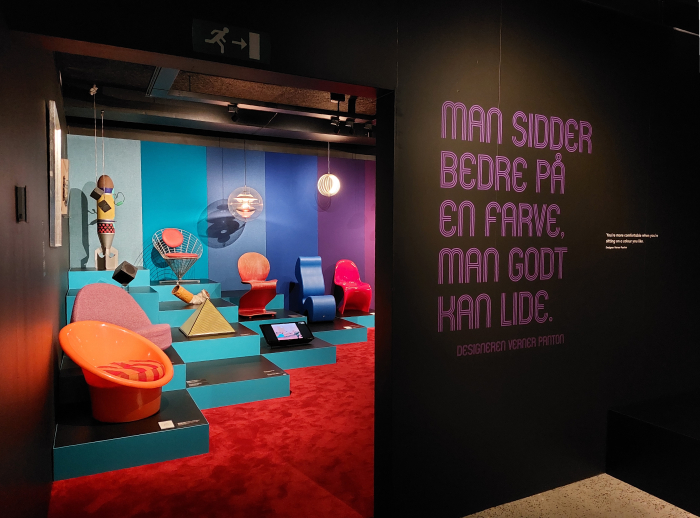
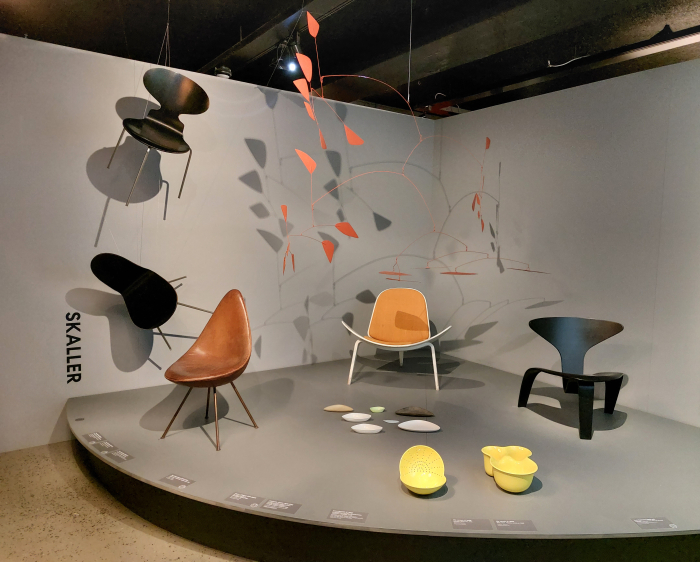
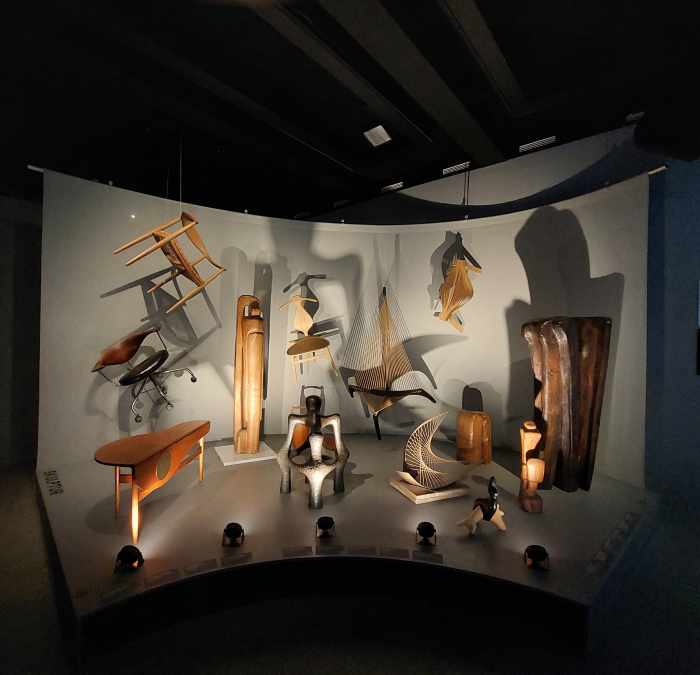
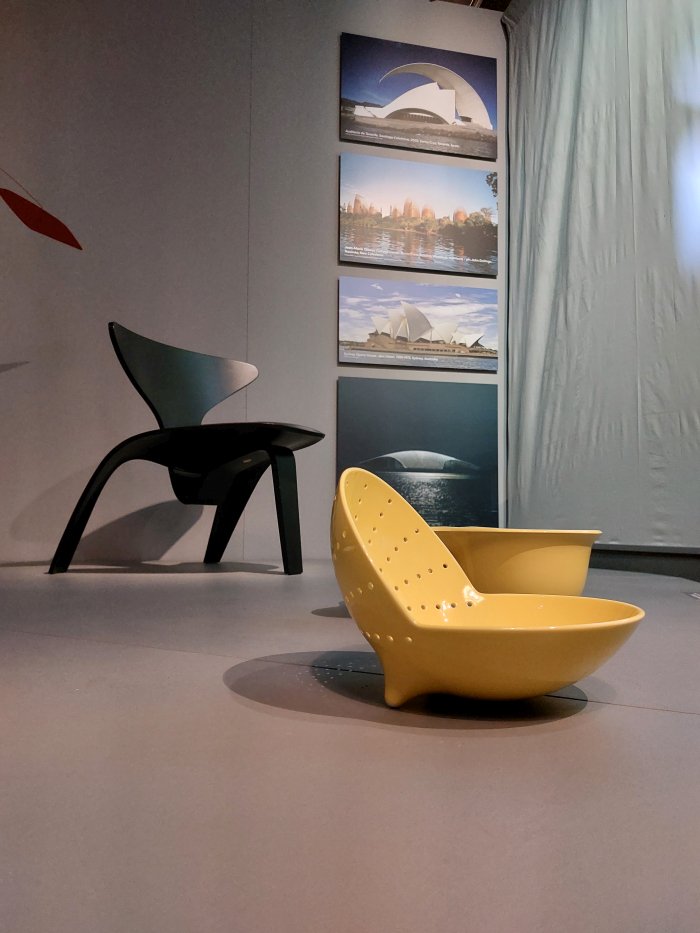
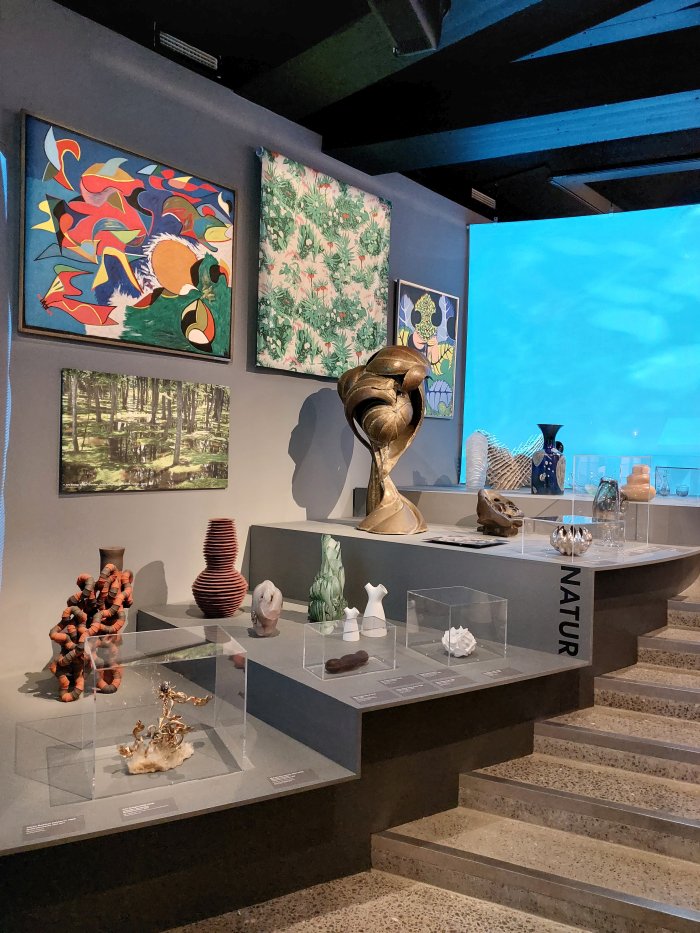
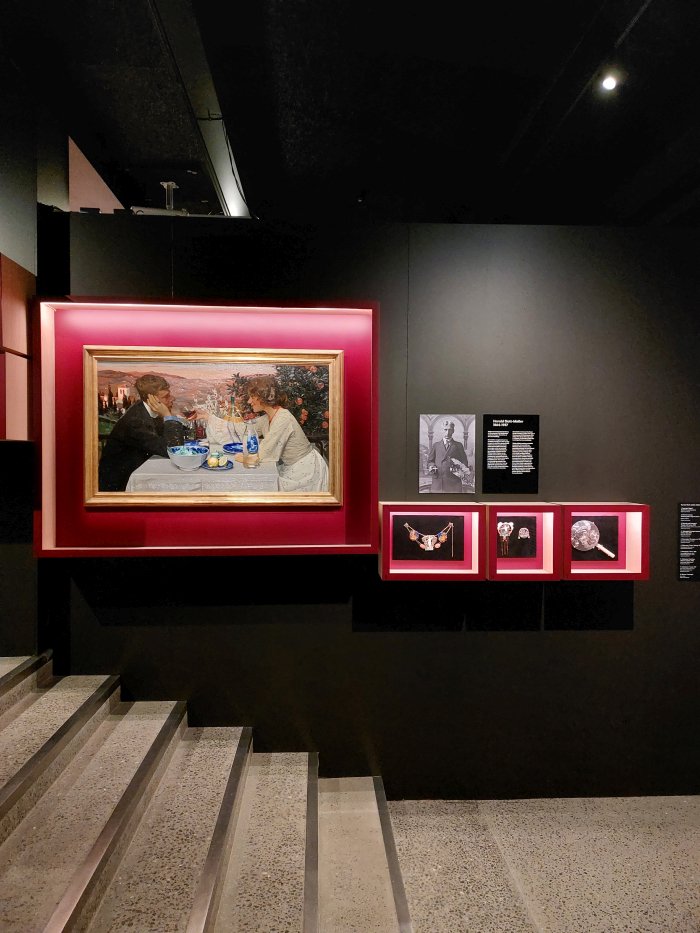
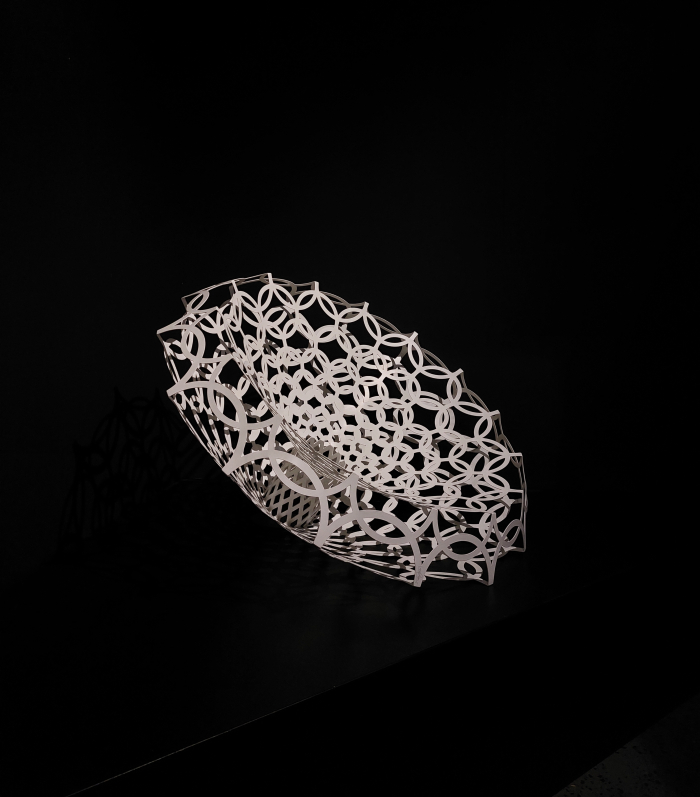
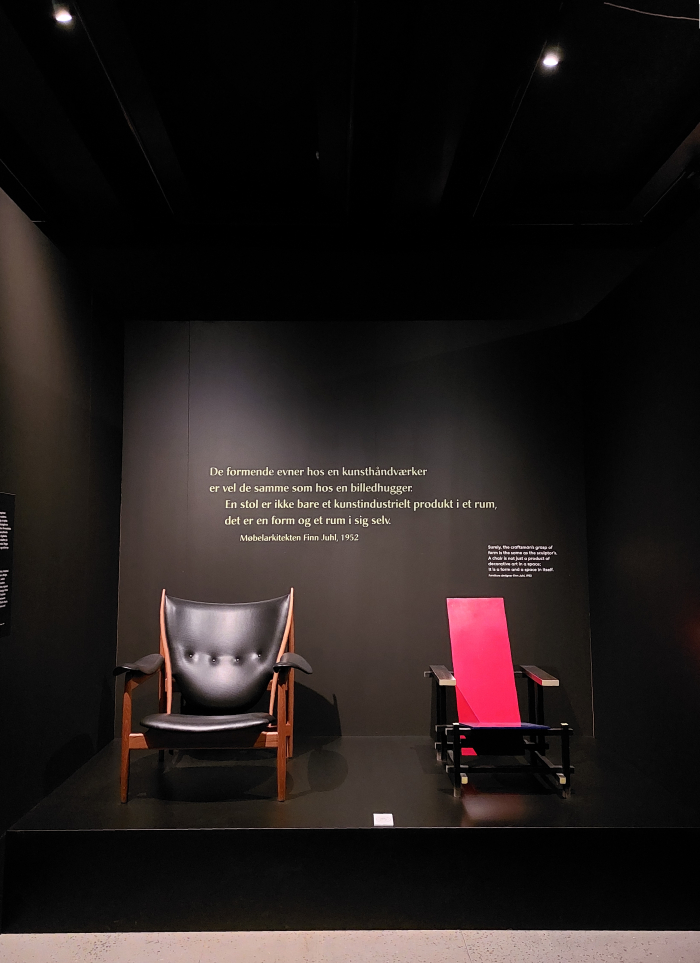
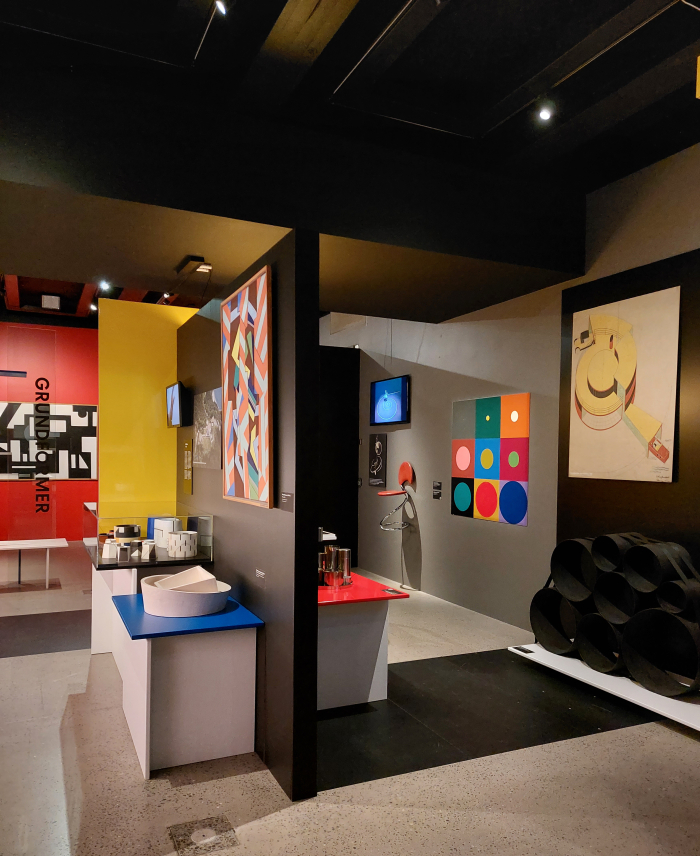
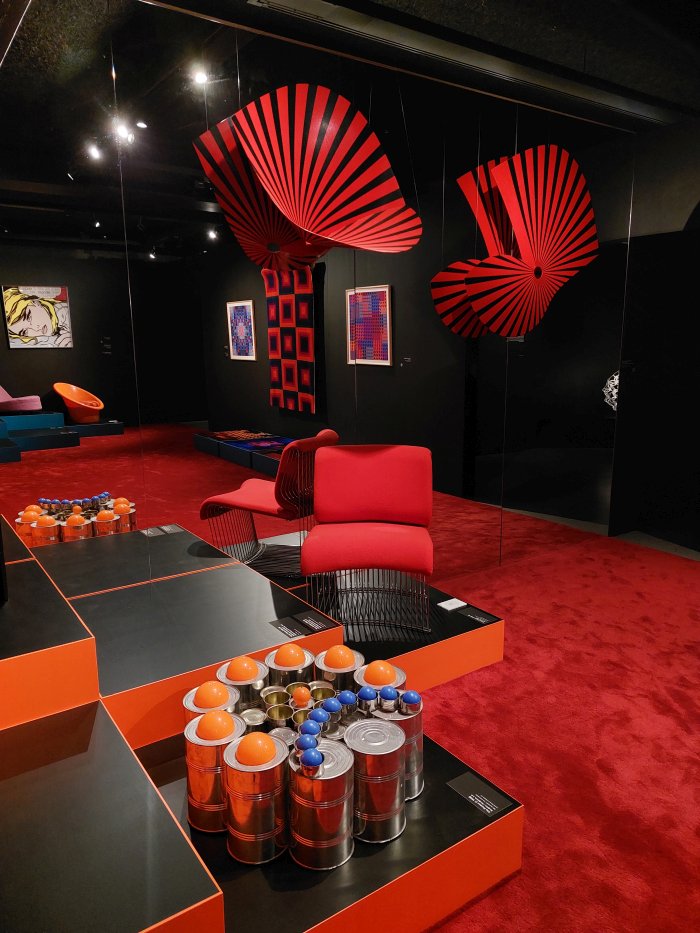
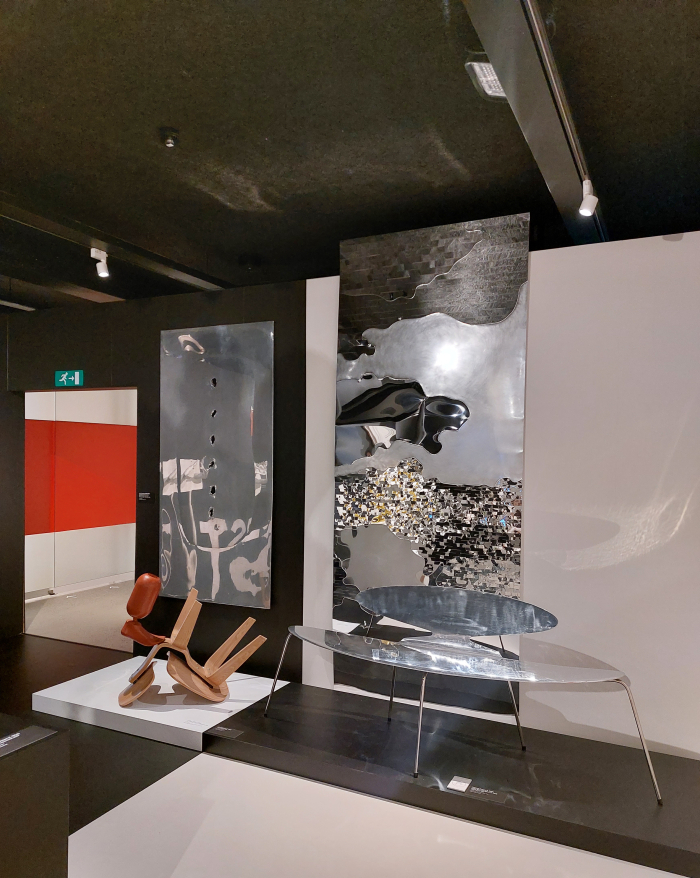
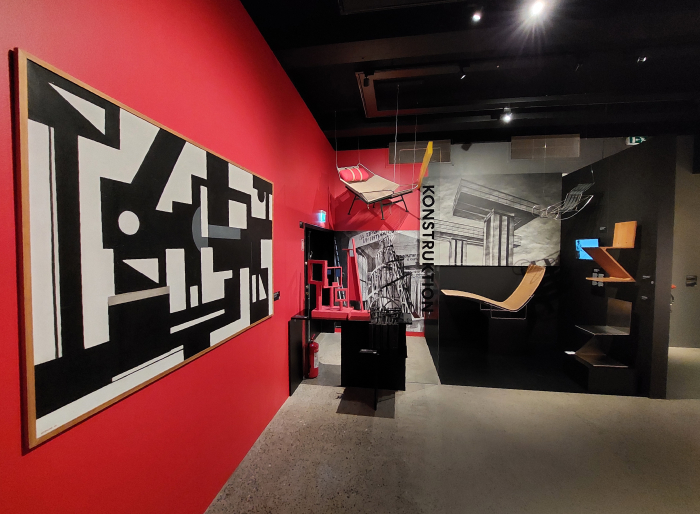
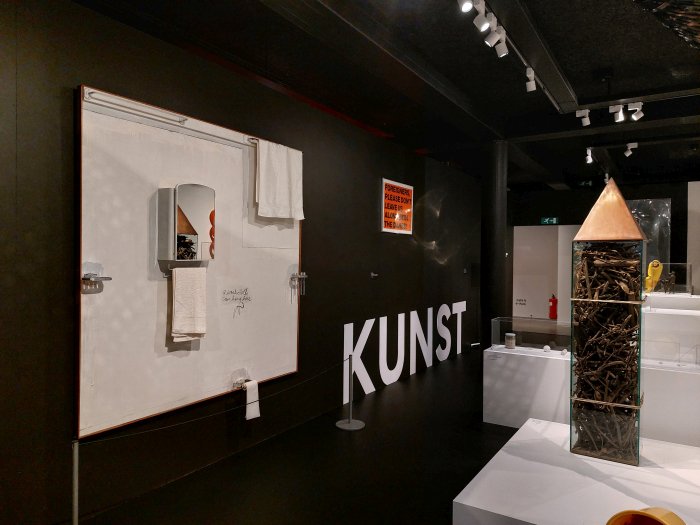
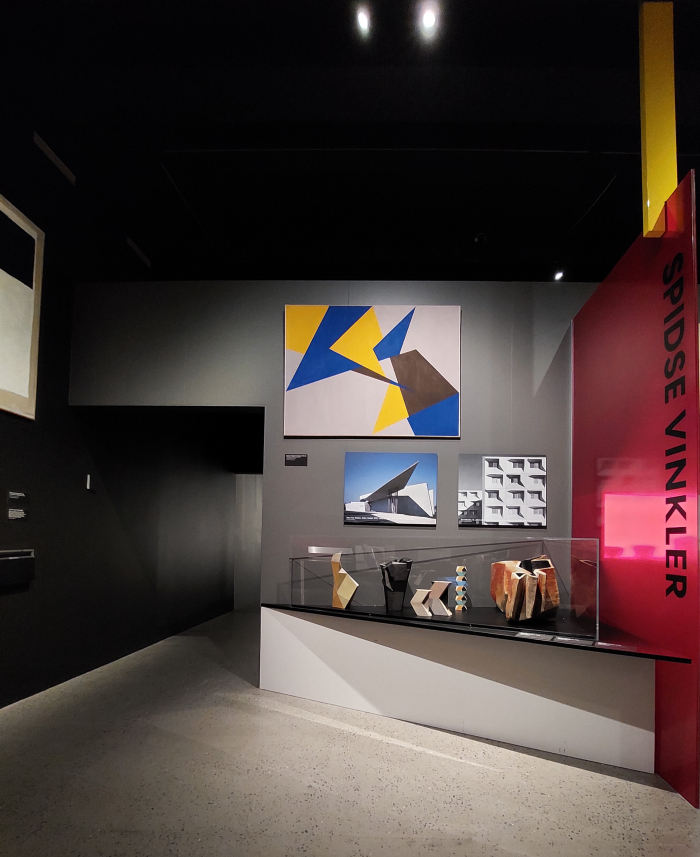
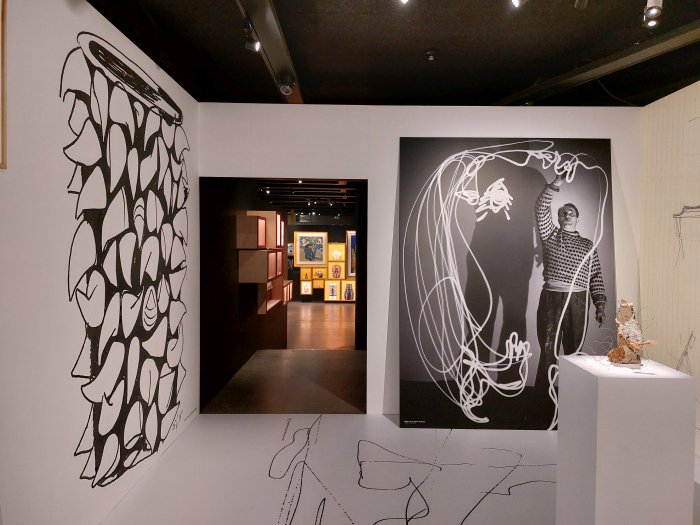
1see Jørgen Roos, Danish Design, 1961, English, 16 minutes. Available via https://www.danmarkpaafilm.dk/film/danish-design (accessed 12.08.2022)
2Among the many episodes such an argument ignores is, for example, the development of furniture by the Shaker communities in late 18th/early 19th century America which for us is design. And also Michael Thonet in mid-19th century Europe, and who was without question a furniture designer. As was whoever it was who developed the first Windsor Chairs. Or who first put a back on a stool to develop the back-stool as the precursor of the side chair. But generally as a visible, active, conscious, process furniture design, we'd argue, begins in the late 19th/early 20th century.
3P.V. Jensen-Klint in a speech at the founding of the Society of Decorative Art, 1901, quoted in Arne Karlsen, Danish furniture design in the 20th century [English translation by Martha Gaber Abrahamsen], Ejlers, Copenhagen 2007, page 14
4see Jørgen Roos, Danish Design, 1961, English, 16 minutes. Available via https://filmcentralen.dk/museum/danmark-paa-film/film/danish-design (accessed 05.11.2021)
5We've obviously nothing against high-quality hand-crafted furniture based on traditional methods, far from it, we're very much in favour of such, are however against the argument that such is intrinsically, inherently, importantly, Danish, and that it is the singular value of the object, and that any object made in Denmark from wood is intrinsically good, will add value to your life, is an object with a value above its monetary, and that not least because as a particularly pernicious form of objectification it's harmful to understandings and definitions of design, and thus to the development of design. In Denmark and further afield. We refer you one again to P.V. Jensen-Klint.... and to his son Kaare Klint......
6"Kunst ist nicht ein Spiegel, den man der Wirklichkeit vorhält, sondern ein Hammer, mit dem man sie gestaltet" We sadly can't find the original, it appears to be one of those quotes everyone uses but no-one knows, or cares, from where it came. And also it may not be from Marx but from Bertold Brecht or Wladimir Majakowski..... Correct referencing is important, you always need the context of the quote, and the date of the quote, not just the quote!!!